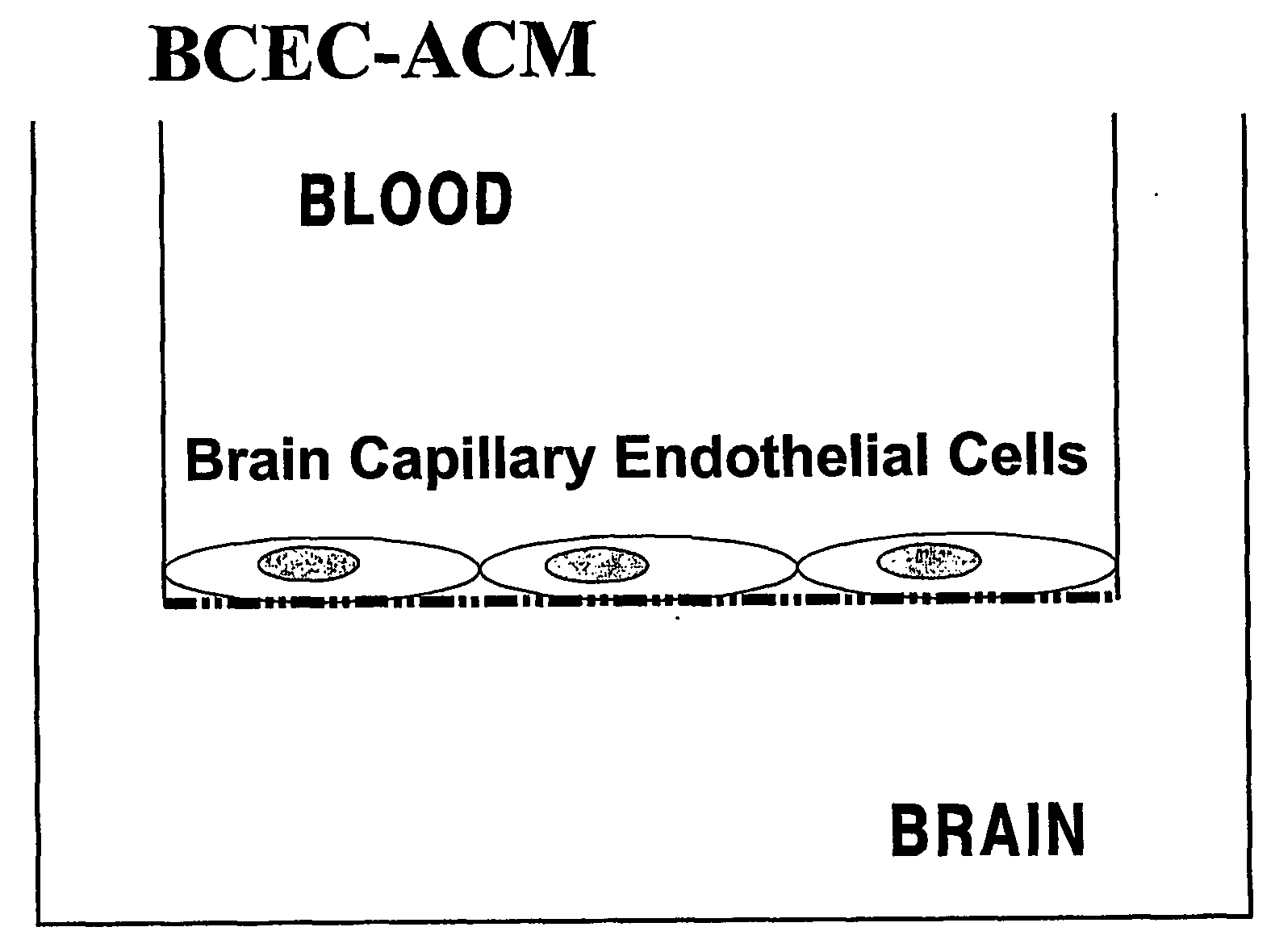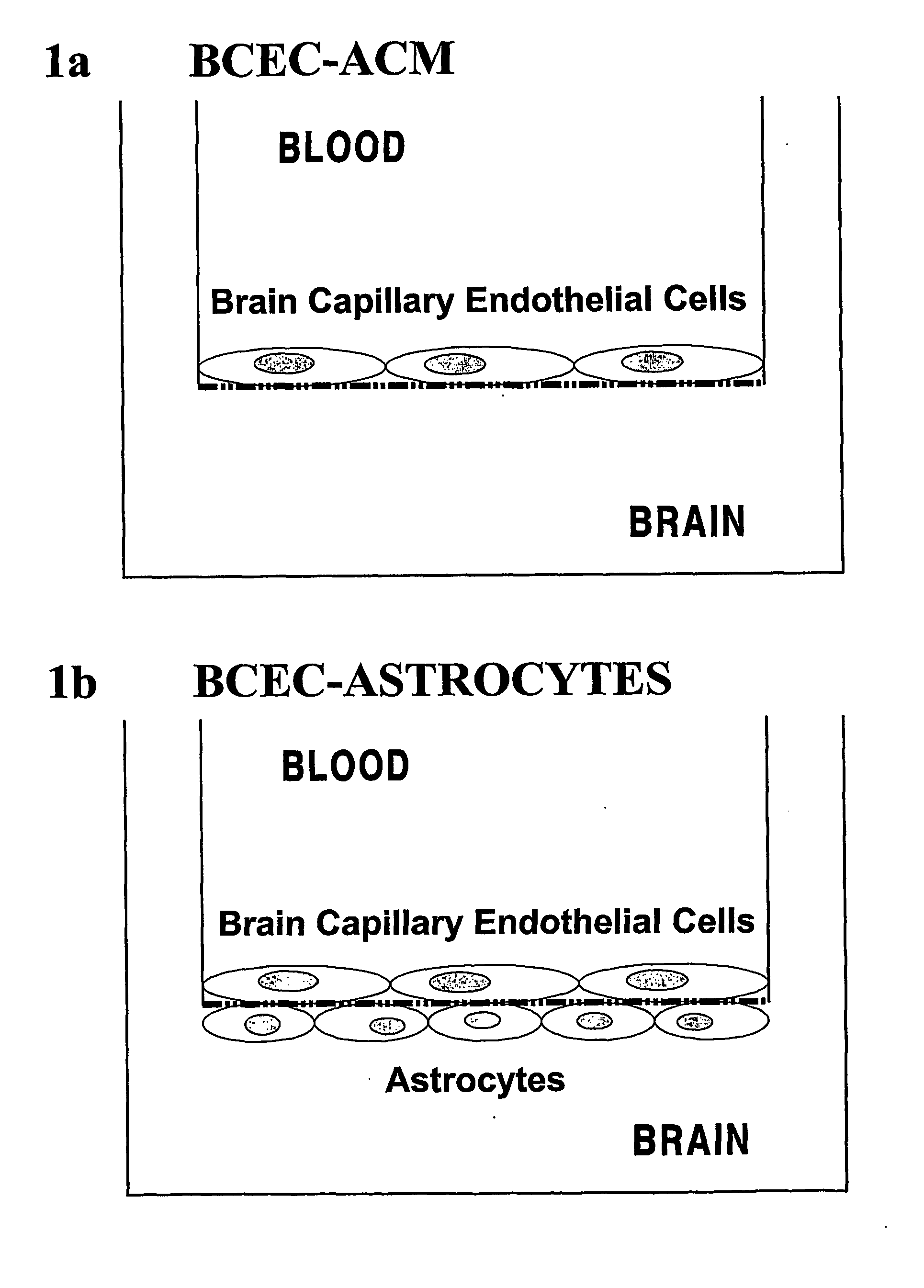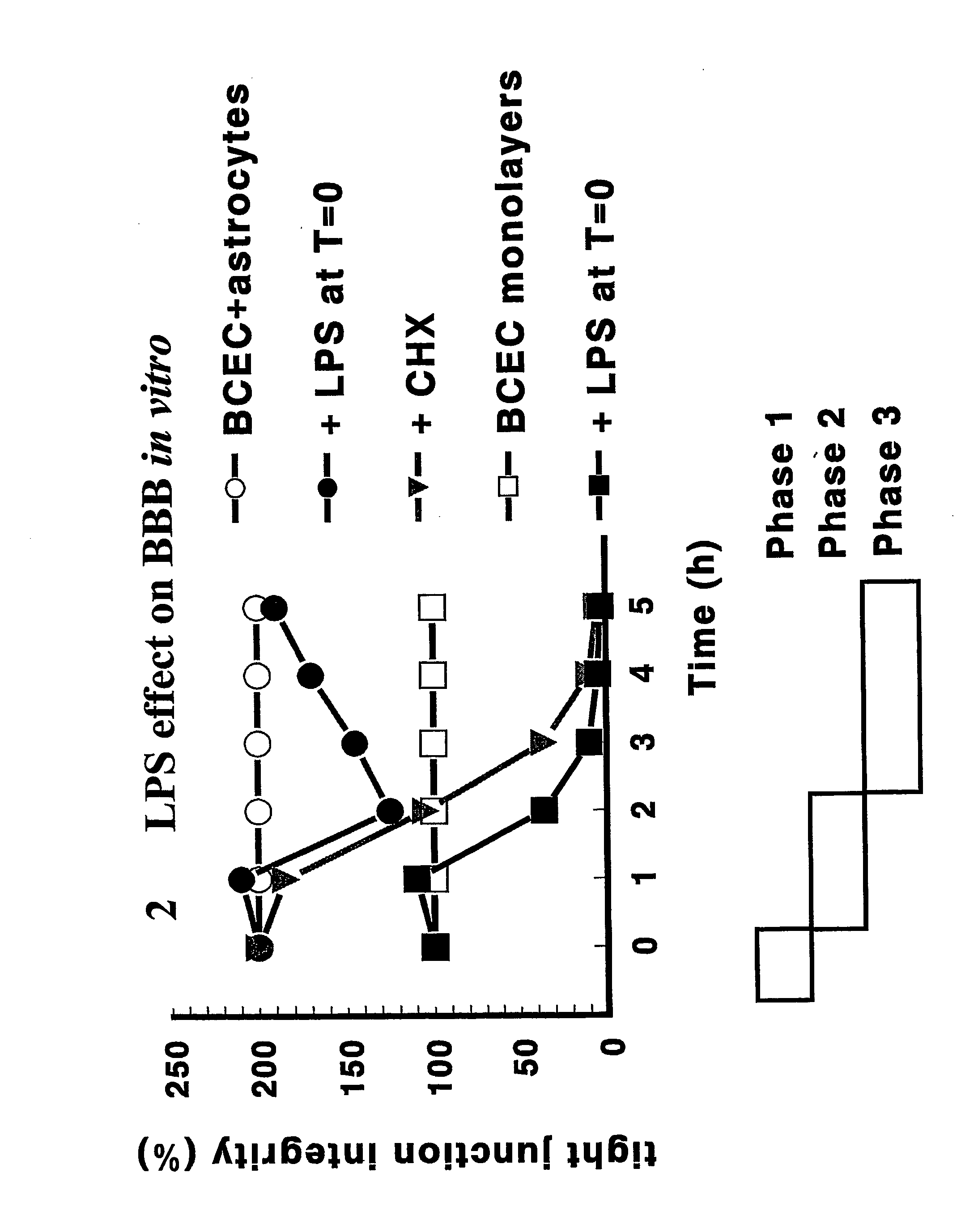Differentially Expressed Nucleic Acids in the Blood-Brain Barrier Under Inflammatory Conditions
a technology of inflammatory conditions and nucleic acids, which is applied in the field of nucleic acids and polypeptides encoded thereby, can solve the problems of severe disabilities, disruption of the bbb, and herniation of the brain,
- Summary
- Abstract
- Description
- Claims
- Application Information
AI Technical Summary
Benefits of technology
Problems solved by technology
Method used
Image
Examples
example 1
Identification of “Lipopolysaccharide-Sensitive” Genes, Differentially Expressed in and Between BCEC-ACM Monolayers and BCEC-ASTROCYTES Cocultures
[0201]In earlier experiments (as detailed in Gaillard (2000a, supra), which is included as a reference), we found that astrocytes and inflammatory processes (mimicked by lipopolysaccharide, LPS) display opposing effects in our dynamic co-culture model of the BBB. Briefly, astrocytes increase barrier functionality, whereas LPS decreases it. Moreover, astrocytes bring about a recovery process from LPS which was not observed without the physical presence of astrocytes (i.e., in BCEC-ACM monolayers). Finally, this recovery process was dependent on protein synthesis, which indicates that specific gene transcription is involved. In FIG. 2, this experimental approach is schematically detailed.
[0202]For the identification of the involved LPSS genes, and their involvement in the recovery process, four different cell culture conditions for our BCEC ...
example 2
Characterization of LPSS14 (DTR) in BCEC-ASTROCYTES Cocultures
[0208]For the characterization of LPSS14 (DTR) on the blood-brain barrier, BCEC cultured from primary isolated brain capillaries from calf brain were used as monolayers on filter inserts with primary isolated newborn rat brain astrocytes cultured on the bottom side of the filter insert (FIG. 1b: BCEC-ASTROCYTES, as detailed in Gaillard et al., 2001, supra, which is included as a reference and briefly herein in “1.1 Cell Culture”). We used: 1) BCEC exposed to various concentrations (1 ng / ml up to 10 microgram / ml) of DT on the apical (blood) side of the filter (results are depicted in FIG. 5); 2) like 1, but then DT was exposed to the basolateral (brain) side of the filter (results are depicted in FIG. 6); 3) BCEC exposed to 100 ng / ml DT which was preincubated (1 hour at room temperature) with various concentrations of soluble HB-EGF (0.1-10 microgram / ml), acting as a non-competitive antagonist for the DTR by binding to the...
example 3
Modulation of the Biological Activity of LPSS14 (DTR) in BCEC-ASTROCYTES Cocultures
[0214]For the modulation of the biological activity of LPSS14 (DTR) on the blood-brain barrier, BCEC cultured from primary isolated brain capillaries from calf brain were used as monolayers on filter inserts with primary isolated newborn rat brain astrocytes cultured on the bottom side of the filter insert (FIG. 1b: BCEC-ASTROCYTES, as detailed in Gaillard et al., 2001, supra, which is included as a reference and briefly herein in “1.1 Cell Culture”). We used: 1) BCEC pretreated for 1 hour with heparin (125 microgram / ml), acting as an enhancer of DT binding at the DTR by introducing a conformational change in the receptor-binding domain for DT, before the BCEC were exposed to 100 ng / ml DT (results are depicted in FIG. 9); 2) BCEC apically exposed to 1 microgram / ml LPS (serotype 055:B5) for 2 hours, thereby increasing the level of expression of DTR, before the BCEC were exposed to 100 ng / ml DT (results...
PUM
| Property | Measurement | Unit |
|---|---|---|
| Fraction | aaaaa | aaaaa |
| Digital information | aaaaa | aaaaa |
| Permeability | aaaaa | aaaaa |
Abstract
Description
Claims
Application Information
 Login to View More
Login to View More - R&D
- Intellectual Property
- Life Sciences
- Materials
- Tech Scout
- Unparalleled Data Quality
- Higher Quality Content
- 60% Fewer Hallucinations
Browse by: Latest US Patents, China's latest patents, Technical Efficacy Thesaurus, Application Domain, Technology Topic, Popular Technical Reports.
© 2025 PatSnap. All rights reserved.Legal|Privacy policy|Modern Slavery Act Transparency Statement|Sitemap|About US| Contact US: help@patsnap.com



